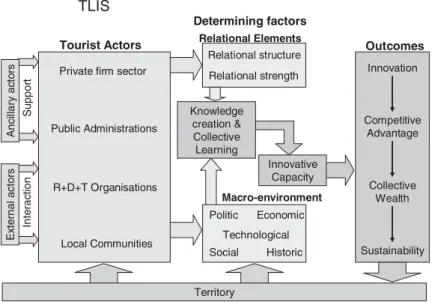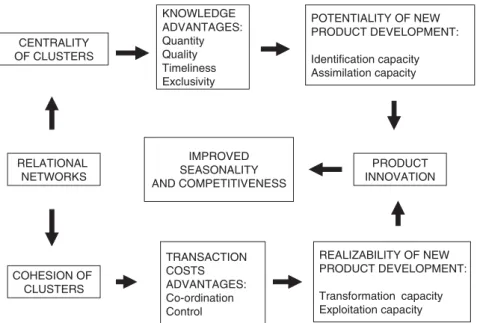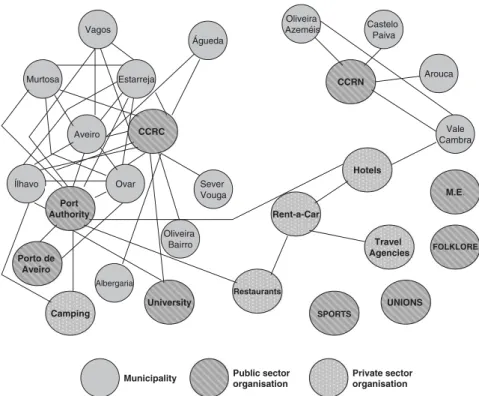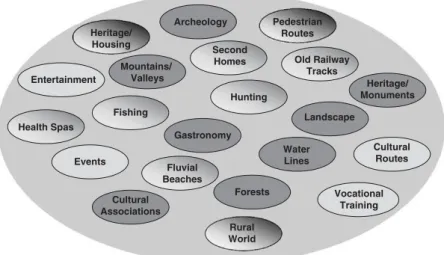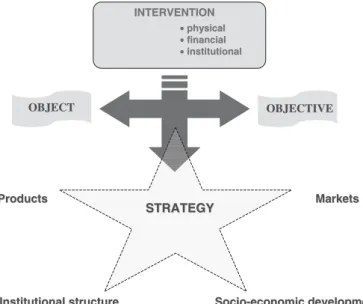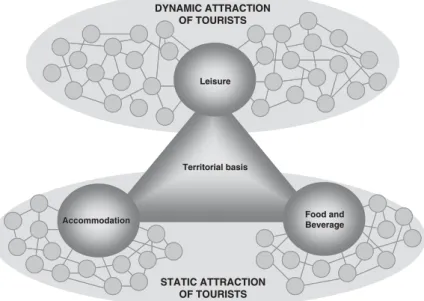The Advances in Tourism Research series publishes monographs and edited volumes that capture state-of-the-art research findings written and edited by leading researchers working in the broader field of tourism studies. The audience is much wider than academics, and each book seeks to make a significant contribution to the literature in the field of study, not only by reviewing the state of knowledge regarding each topic, but also by questioning some of the prevailing assumptions and research paradigms. that currently exist in tourism research.
Contributors
Preface
The European matrix of the studies is clearly highlighted by the wide range of approaches followed and the empirical evidence presented. Before making a detailed analysis of the individual contributions, we would like to mention a number of common, cross-wise elements that can be found in all papers and considered as a first starting point, general opinions about a "European way" of approach to the tourism issue can be developed.
A Short Overview
Through the interesting case of PMG "Great Houses and Gardens of Ireland", the author explores collaborative marketing groups and their socio-cultural issues, product visions, perceived values as well as many of the constructs associated with collaborative concepts. operational marketing, network and relationship marketing. The contribution focuses on the management of the network in its different phases and on the roles of actors in the existing network, identifying their future needs.
TOURISM LOCAL SYSTEMS: ECONOMICS APPROACHES
Systemic Approaches for the Analysis of Tourism Destination: Towards the Tourist
Introduction
Systemic Approaches to Tourism Destinations Developed by Management Science: Destination Management and Local System
From this point of view, the tourism destination is seen as a set of products (final experience) offered by a wide number of cooperative players (tour operators, travel agents, passenger carriers, hotels and other service providers) and the competitive advantage - the number of chains depends increasingly from the system of local actors. Buhalis and Cooper (1998) highlighted instead the small and medium size of enterprises conducting their business in the tourism industry.
Territorial Models Developed by Industrial Economics
The analysis of the South African cluster is mainly aimed at promoting support activities for national tourism. 14For analysis of the sources of competitiveness in Italian TLS, see Capone and Boix (2004).
Towards the Tourism Local System
In this context, we applied Lazzeretti's approach as an extension of the industrial district theory to the cultural district. In particular, there are two elements at the basis of the configuration of a cultural district that can be extended to the touristic local systems.
Local Tourism System: A Comparison to the Italian law 135/2001
The area can be represented as a tourism branch as SMEs specialize in one or more stages of the "productive process" of providing tourists with a special experience. Law 135/2001 aims to meet the need of local stakeholders for cooperation and networking to create an integrated tourism organization and improve the quality level of the tourism destination.
Conclusions
In our opinion, the wide acceptance of these approaches (especially in the past years) has encouraged the Italian legislator to develop policy initiatives in this area, although they are mainly focused on promotion and are characterized by a top-down approach. The wide adoption of these approaches (especially in recent years) has encouraged the Italian legislator to develop political initiatives in this area, although it focuses mainly on promotion, which is characterized by a top-down approach, the lack of the main feature of the proposed theoretical models.
Acknowledgments
The tourist district is a place and a whole of "close interrelationships", where the role of the social community is strictly linked to the industrial world. The TLS is a territorial entity characterized by two elements: the cluster of economic, non-economic and institutional actors and the social community.
The value of each model lies in the fact that it focuses on a specific element of the tourism business system, according to the particular subject area. The important role played by systemic approaches and network cooperation between tourist destinations is therefore recognized at the Italian level as in the proposed Law 135/2001.
Identification and Analysis of Tourist Local Systems: An Application to Italy
Tourist Local Systems
Subsequent analyzes have made it possible to construct a map of Italy based on local systems of tourist services in the strict sense of the word (restaurants, travel agencies, etc.) (Sforzi, 1997b). The ISTAT analysis is developed through the analysis of the groups of activities that prevail in the local area at a three-digit level.
Tourist Local Systems as Specialized Local Labour Market Areas
Third, they respect a strict identification methodology as described in the 1997 volume of ISTAT (Sforzi, 1997a). Identification (as industrial districts) of the local production systems mainly composed of SMEs whose main industry consists of SMEs.
Identification of Tourist Local Systems in Italy
Around 90% of the workforce in local systems work in SMEs with fewer than 20 employees. The highest values are concentrated in the north (Trentino and Upper Poadižje) and in the center of Italy (Liguria, Tuscany and Lazio).
A Typology of Classification to Analyse Tourist Local Systems
This confirms the suitability of the district model for the study of the tourism industry because it is based on a network of small and medium-sized local businesses. It has then been shown that there exist interconnections between the tourism industry in TLS and other sectors, such as agriculture, industry, trade and especially manufacturing activities.
Acknowledgements
A review of the state of the art showed that the quantitative identification of TLS is still underdeveloped. Other studies, such as IRPET, reveal instead the relationship between tourism systems and other sectors, but are not extended to the national level (Tuscany only).
A Framework to Identify a Localised Tourism System
The organizational mode among tourism actors can be considered as a continuum between two extreme situations: the LTS and the absence of structural links between tourism actors within a destination. Then, after discussing the specificity of tourism, the LTS is analyzed using the proposed ID's framework, focusing on indicators that can categorize the LTS.
Industrial District
The last category, corporate networks with some form of management, draws attention to the existence of a manager who provides "the strategic services and the impetus for diversification in different products and sectors, with the reorganization of production and new relationships with companies, local institutions, and factor A framework to identify a localized tourism system 45. The degree of cumulativeness concentrates on the enterprises in the district itself: how long they have been in business and the skills of the workers.
Application to the Tourism System
It defines the features of LTS, focusing on all tourism actors within a given space. The limits of the tourism system can also be seen through the actors themselves, i.e.
Conclusion
Industrial districts and cooperation between firms in Italy. Geneva: International Institute for Labor Studies.
The Destination as a Local System of
Innovation: The Role of Relational Networks
The conceptual framework we propose shows all actors in the local destination, relevant to its configuration as an LSI (government agencies, private sector, research and academic institutions and local community), and how they should be organized to achieve sustainable competitiveness. In what follows, we will first present the background literature on innovation, competitiveness and tourism, then we will move on to the systems of innovation literature, and finally we will show the conceptual model of an LSI in tourism and emphasize the relevance of the role played by relational networks. play in it.
Innovation and Competitiveness
Innovation in Tourism
Systems of Innovation
However, Lunvall (1992) is known as the father of the national innovation systems literature. Moreover, it is believed that most of the strong ties between the actors of the innovation system exist at the regional level.
The Destination as a Local System of Innovation
The problem with the local level, however, is that it does not always have the variety and quantity of actors (e.g. universities) required in an innovation system. At the local level, the innovation system consists of a network of local actors and the interaction between them.
The Relevance of Relational Networks
As can be seen, there are two characteristics of the relational networks in a cluster or local destination that must be considered: the centrality of each cluster in the global system and the internal structure or coherence of the clusters. The two circumstances (centrality and cohesion) must coexist to improve the innovative capacity of the local destination.
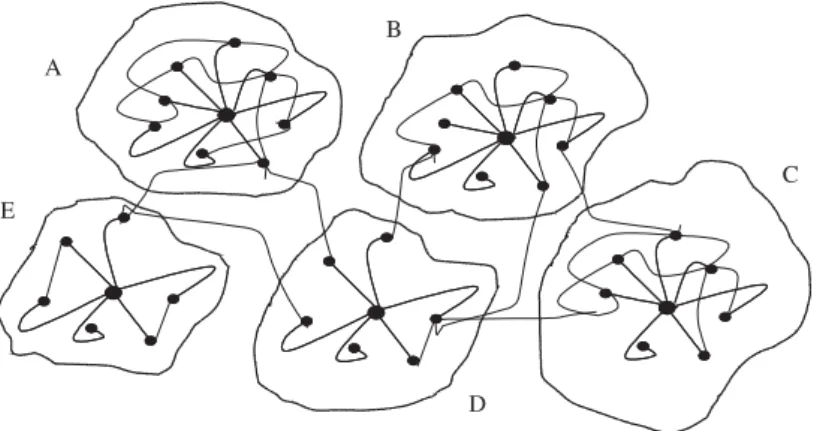
Do Clusters and Networks Make Small Places Beautiful? The Case of Caramulo (Portugal)
New Approaches to Tourism Planning
The cluster concept focuses on connections and interdependencies between actors in the value chain in producing products and services and innovating. Clusters are often cross-sectoral (vertical and/or lateral) networks consisting of dissimilar and complementary companies that specialize around a specific link or knowledge base in the value chain.
Regional Tourism Networking in Portugal
Networks can also bring more efficiency and effectiveness to the operation of the regional tourism administration, new dynamics in their operation and make them more powerful and stronger to influence national policies. The study, therefore, revealed that as a result of the characteristics and potential offered by the networks, they present a credible alternative for how the regional tourism administration should move forward in the future.
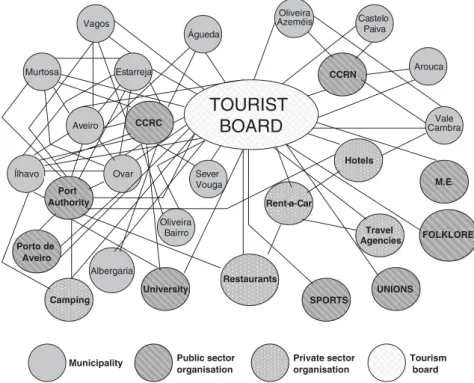
Challenges for Tourism in Peripheral Areas: The Case of Caramulo
Do clusters and networks make small places beautiful?75 Table 5.1: Some indicative characteristics of the Caramulo area. One of the main goals of this program is the establishment of formal networks based on the already existing informal connections and the development of strategic guidelines.
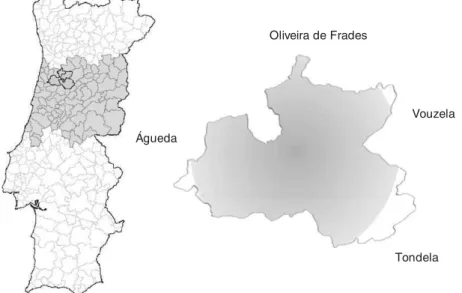
Regional Tourism Policy Program Anchored on Private Sector Investment
The implementation of the tourism strategy written in the program presupposes territorial intervention, which is carried out on several levels: physical, financial and institutional (see Figure 5.6). Towards improving the efficiency and effectiveness of tourism planning and development at the regional level.
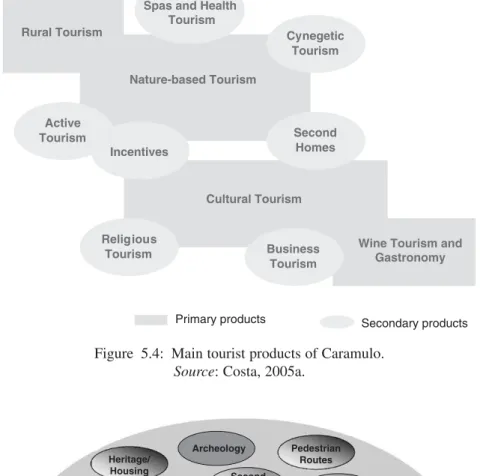
Destination Governance and Contemporary Development Models
The aim here is to explore these patterns from a governance perspective in order to clarify to what extent and how the governance perspective makes sense when addressing these patterns in the destination context. It also discusses the implications for empirical research in tourism destination development based on these arguments.
Partnerships
The municipality and some key actors in the destination undoubtedly had close ties, thus illustrating the importance of the public-private dimension of destination development. To be effective, they must include the key public and private actors in the destination.
Innovation Systems
The characteristic element of the innovation system is the infrastructure of innovations, including research and research funding institutions and universities (Östhol & Lembke, 2003). Some of the private enterprises in the destination definitely recognize knowledge as central to the further development of the destination.

Concluding Remarks
Understanding the dynamics and role of different actors in the innovation system can help destinations in developing innovative processes, even if they cannot be considered as complete innovation systems. The same caution in judging the role of government is motivated in the innovation system model.
Tourism Industrial Development and Multinational Corporations: A Case of
As noted by Quinn (1972) and Livingstone (1989), the total exclusion of natives in management is very unfavorable for the long-term development of the firm in the local environment. After all, employing locals in management and creating local supply networks both backward and forward brings benefits to foreign multinational firms.
What are Productivity Spillovers?
This suggests that the destination is relatively less dependent on the presence of foreign international hotel chains. It increases the level of market concentration in the host industry or spreads oligopolistic markets from the developed industry (home country) to the less developed industry (host country) (Hymer, 1960).
Absence of Productivity Spillovers
Therefore, it can be suggested that market access spillovers are a product or evidence of positive productivity spillovers. In this paper, we have adopted a qualitative approach to capture evidence of productivity spillovers in the Malaysian hotel industry.
Setting the Scene
Consequently, quality knowledge of the state of development of such variables in the host industry is essential in policy decision processes. However, after nearly three decades of growth, there was still clear evidence of the dominance of foreign international managers in the Malaysian hotel industry.
Findings
However, the medium of education was changed from English to Malaysian language (National language) in the mid-1980s. This is one example of pressure on local managers, causing more hotels to use international managers in the process.
TOURISM LOCAL SYSTEMS: MANAGEMENT APPROACHES
Tourism System Dynamics: A Multi-level Destination Approach
Introduction*
In this way, a conceptual model is proposed that facilitates the understanding of the various phenomena related to tourism development and, consequently, the studies and research works in this field.
The Model
The tourism product, through interaction with customers, determines their perception of the territory (global tourism experience). Tourism product which, by interacting with customers, determines their perception of the area (global tourism experience).
The Territory: Resources, Competences and Sustainability of the Competitive Advantage
By harmonizing the exploitation of the existing resources (while the deficient or non-existing resources are developed), and combining them, it is possible to create distinctive competencies, top-level management skills that in turn guarantee a sustainable competitive advantage (Sicca, 1999) . . The preparatory phase involves identifying and analyzing the needs of the various internal (companies and resident citizens, local policy makers) or external stakeholders (users of goods and services provided by the area, investors or potential new customers).
Systemic Frameworks: Interrelationships and Governance Body
The degree of interdependence between stakeholders is meant as the degree of influence that an individual player exerts on one or more members of the system. As long as the intensity of the three variables mentioned above increases, there is therefore a shift from a configuration characterized by a low degree of interdependence to a configuration characterized by a high level of interdependence.
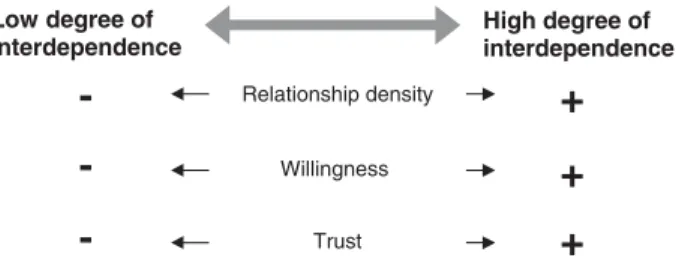
The Tourism Product
Regarding the origin of the tourism product, the literature recognizes three different ways in which it comes about (Rispoli & Tamma, 1995). The different models that generate the tourism product determine the different level of inclusion of the key features of the value proposition in the product (Figure 8.7).
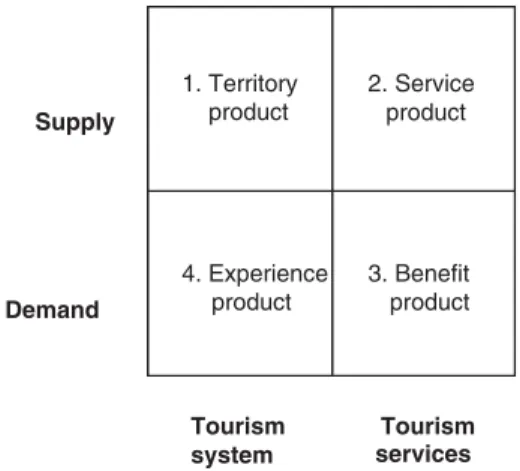
The Process
In this case too, the process is completed with an event aimed at promoting the potential of the destination and its "new tourism offer". A whole set of financial resources and administration tools that enable the implementation of the plans above.
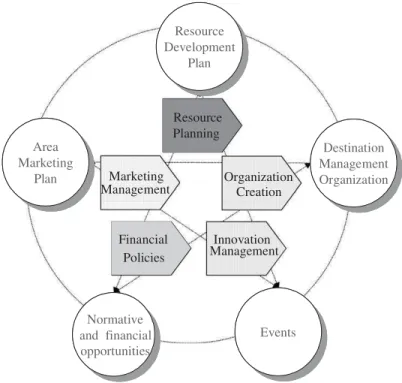
Integrated Quality Management as Part of the Strategic Management of Tourism
Destinations: A Systems Perspective
Quality management of a tourism destination is achieved by working closely with the local communities and tourism stakeholders in the area. These principles provide a common sense approach to sustainable and integrated tourism, a realistic and feasible way to meet social, cultural and environmental needs while improving the competitiveness of the tourism destinations.
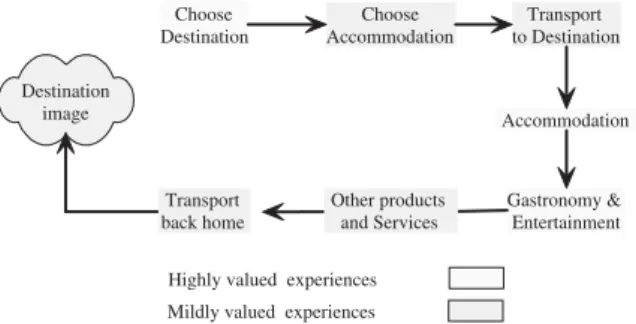
Tourism, Integrated Quality Management and Sustainability
A destination's success in terms of tourist satisfaction is therefore shaped by a number of interdependent components. The increased level of compliance with ISO standards that occurs as revisions continue over time can lead to more and more red tape.
The Systems Approach
For a tourist destination, IQM can be seen as a systematic search for internal and external quality (economic improvement in the short term and local development in the long term). External quality means the development of sustainable tourism with rational and renewable use of resources such as land, energy, water, natural resources, heritage, etc., in order to prevent overpopulation problems.
The Research Method
One of the main questions that arise in the context of integrated management (be it sustainable management, IQM or tourism destination management) is how to make it effective and operational. An experimental management laboratory, also referred to as Microworld in the Systems Dynamics literature, allows experimentation with different management strategies and observing the effects of those strategies on the components of the system over time.
Systems Modeling and Tourism Development
Hopefully using it to support consensus building and achieving a shared vision will facilitate the networking and partnership efforts that need to be made by key tourism destination stakeholders as they strive for a satisfactory level of integrated management. Finally, visual aids, such as sensitivity analysis, life cycle dynamics or a Balanced Scorecard, can be set up to assess progress in the most sensitive areas of action and measure cost savings (see Figure 9.6).
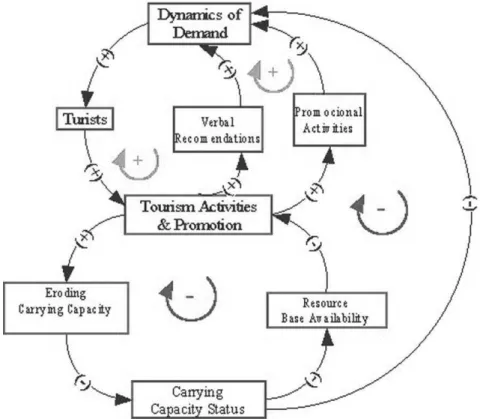
Anatomy of a Management Experimental Laboratory
Creating a causal diagram can help sensitize people to issues of balancing the costs and benefits of IQM, avoiding the pitfalls of bureaucracy and red tape, managing structural behavior, and understanding the dangers of focusing on symptoms in instead of focusing on the root causes of problems created by unsustainable development patterns. Instead, its main purpose is to help us learn, developing systematic and strategic thinking skills that can be used to improve decision-making performance.

Learning and Managing Through Controlled Experiments
Two of the most important features included in the lab are a strategic decision-making center and a balanced scorecard-style dashboard. In the long term, tourism is not possible without the integration of economic, political, environmental and cultural dimensions.
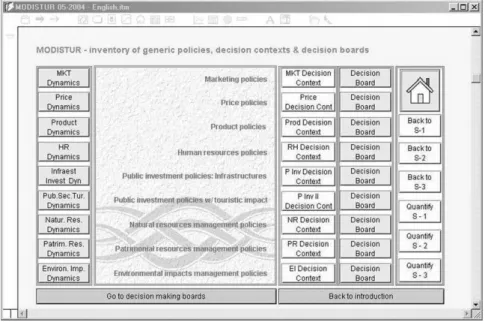
The Use of Relationship Marketing in
Developing Network and Co-operative links within Tourism Product Marketing Groups
Numerous interactions in the form of relationship building, networking and collaborative practices take place between the members of the group and between the members and external stakeholders. Many SMTEs are fragmented and lack structure either in the organization or in the way the business is run.

Literature Review
In identifying practices operating within a PMG, it is hoped that both best practice and shortcomings can be explored so that a more effective and efficient approach can be developed with a view to increasing competitive advantage for SMTEs in this sector.
Characteristics of Networking, Co-operative Marketing and Relationship Marketing
Many factors influence the low level of involvement and these are based on the value of the relationship to the stakeholder. Group identification is defined by Kelly and Kelly (1994) as "an individual's desire to connect with other members".
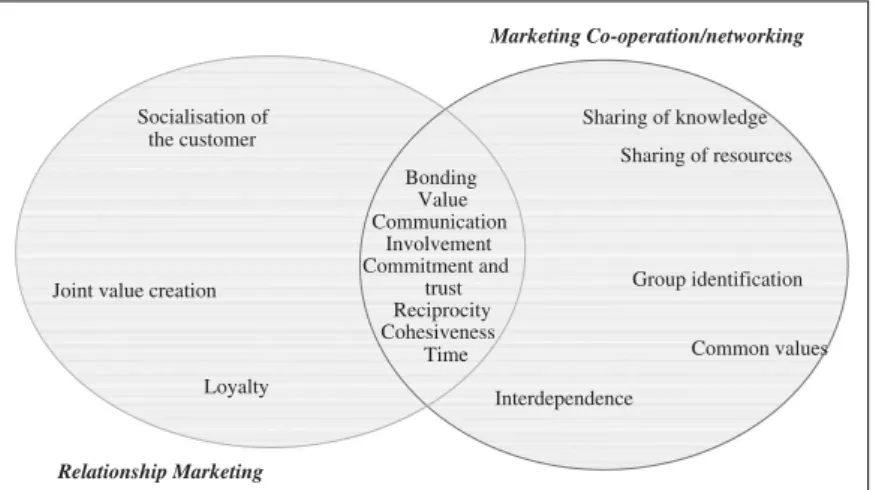
Research Description and Methodology
This also contributed to the pre-understanding of the subject area and the working paradigm (Gummesson, 2000). The importance and benefits of the product including economic, social and the use of various marketing tools.

Summary of Findings and Discussion
The size and capacity of some gardens would discourage cooperation with tour operators. The majority of respondents used the Internet as a marketing tool (n⫽ 17), although all are present on the House, Castles and Gardens website.
Co-operation and Relationships Marketing
All were or had been members of a cooperative marketing group, and most found it to be a very effective method of marketing (n⫽13). While researching this particular area, a number of issues related to their involvement in cooperative marketing groups have been mentioned, including geographic location and internal disputes within the cooperative structure.
Relationship Building and Benefits
A large number of respondents alluded to ongoing concern within collaborative marketing groups, e.g. Respondents' opinions regarding marketing cooperative groups at various geographic, local, county, regional, and national levels were explored.

Conclusion and Future Issues
However, the manager believed that "the cooperative model will work, but only if the cooperative principle is constantly respected and if the members have a serious commercial stake in the property." Parvatiayar (Eds.), Marketing Theory and Approach - The Emergence of Relationship Marketing: Theory, Methods and Applications (Section 1, Lecture 2.1).
Information and Communication Technologies Supporting Destination Management: A
Multimedia Application
The project developed a hardware and software prototype that allows tourists to access information about the historical-artistic heritage in Campania - points of interest, suggested itineraries, museum opening times, through Multimedia Messaging Services (MMS). However, this virtuous development mainly depends on the development (especially within the physical territory) of a culture and practice aimed at creating relationships, consortia and networks.
Approaches to Destination Management: Analytical Perspectives
The destination then corresponds to the whole set of products/services - traditional and innovative, tangible services (historical-natural assets, firms, infrastructure) and intangible services (culture, traditions, competences, quality of life) - offered by a specific . area (Pollarini, 2005). In fact tourists develop an idea of the destination much earlier than their actual visit; this is why operating in the market space created by the digital revolution is crucial (Rayport & Sviokla, 1995).
Evolution and Dissemination of Information and Communication Technologies within the Tourism System
The Internet has profoundly changed relations between the firms of the tourism system and between the system and consumers. In general, the possibility of profiting from the web depends on operator visibility and on the ability of the website to capture visitors (potential customers).
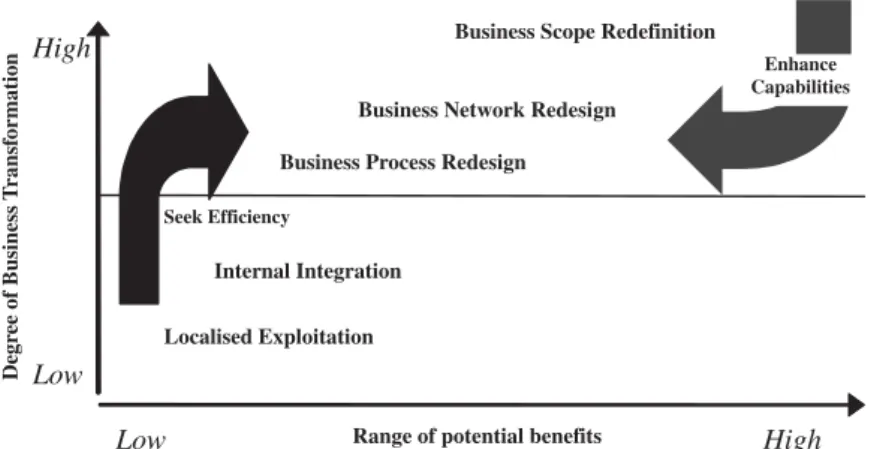
Multimedia Technologies as Tools to Support Destination Management
Using these technologies, virtual intermediaries are increasingly pursuing differentiation strategies based on the specific characteristics of the network. The different types of devices are also different according to their use and the content and formats of the communication they have to accommodate.
The Project “Campania in Pillole”
The search engine can be easily identified and found on every internal page of the website. On the other hand, consumers can have direct access to the supply system, purchase products and services, and play an active role in building the purchased package of services.
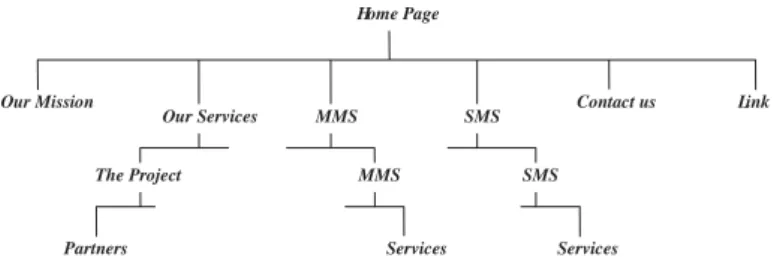
Regional Tourism Co-operation in Progress
The purpose of this study is to increase the understanding of the process of developing networks in tourism. In addition, the coordinator must know his role in the development process, his opportunities to motivate the emergence of the new network and must be able to manage the process.
Managerial Views of Network Development
The empirical part of the study is based on a regional tourism development case in the province of East Uusimaa, Finland. p. 5). The mobilization of other actors in favor of a certain technical solution is one of the key issues to succeed in the process.
The Case: Premium Visit Co-operation in Progress
The project coordinator and the owner of the focal firm selected 25 companies for the project. These companies were either existing partners of the focal firm or new ones that they found promising.
